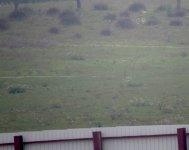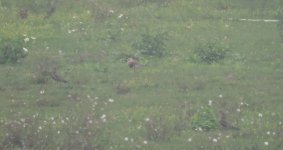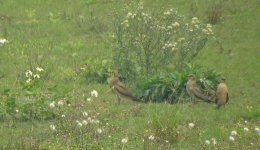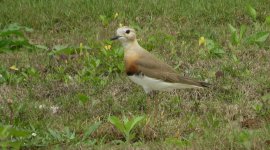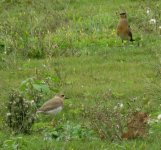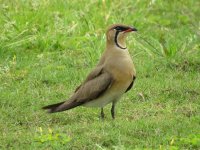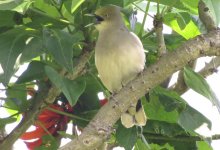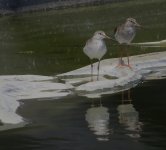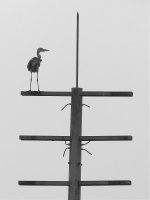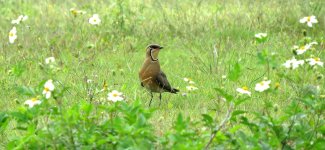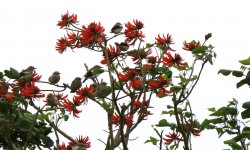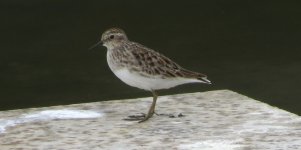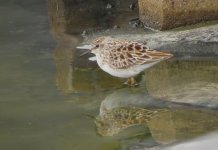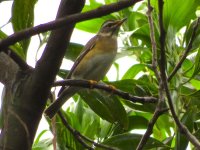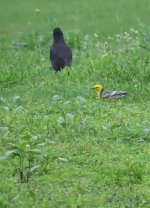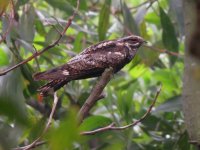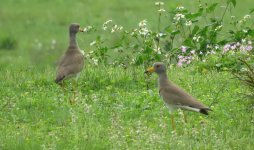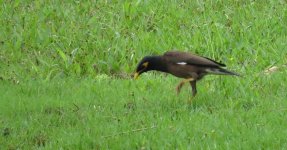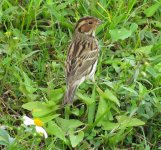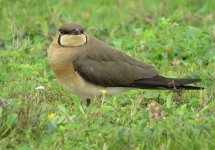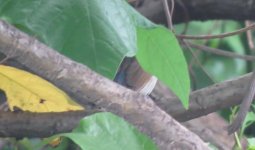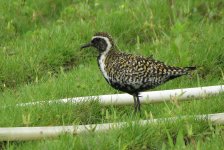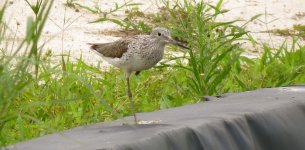MKinHK
Mike Kilburn

Too much work has kept me off the Roundabout for two of the most productive weeks of the year, but a swift 45 minutes at lunchtime today was magnificently rewarded with a loosely intermingled flock of 16 Oriental Pratincoles and five Oriental Plovers!
Having decided to have a look over the golf course from the footbridge I was very pleased to find a couple of pratincoles hawking along the line of the long pond, despite the ongoing construction works on the APM. BTW I love the idea of APM being a mover of automated people John!
A scan over the fairway then showed a few more pratincoles standing very upright on the ground and a pale-headed bird amongst them that was clearly not a pratincole. . . I was pretty sure it could only be an Oriental Plover but the range was pretty distant and I somehow couldn't find the bird in the first fuzzy digipic I fired off. A closer look at the pic when I downloaded them onto the laptop actually revealed two birds!
Skirting around the edge of the construction works I was able to get substantially closer and after a careful approach had much better views form across the long pond of both birds amongst the pratincoles, along with a couple of Common Sandpipers that were also feeding on the fairway.The bird that first caught my attention was a superb pale-headed male with a rich orange breast band, separated from the white belly by a broad black border - see my second pic, which has more than a hint of a BB record shot circa 1976!
After a while they flipped back over the ridge as I was distracted by the first of eight White-shouldered Starlings and a singleton Silky Starling in the coral trees.
I walked round the far end of the pond hoping to relocate them, picking up five Red-throated Pipits, a Little Egret, and a Grey Heron on the way. Peering over the ridge I was blown away to find not two birds, but three, and eventually two more, to make five Magnificent Oriental Plovers!
They were clearly curious. As I propped the camera against a floodlight pole three different birds stop-started their way towards me over the course of the next 20 minutes, with the closest not more than 25 metres away - a wonderful wonderful moment! The remaining pix speak for themselves as to just how good this was and it was with great reluctance I tore myself away to attend the opening of the airport's almost as magnificent new Midfield Concourse.
A couple of Magpies, a lingering Chinese Blackbird and two more Silky Starlings enlivened the walk back on one of the very best short sessions on the Roundabout.
Cheers
Mike
Having decided to have a look over the golf course from the footbridge I was very pleased to find a couple of pratincoles hawking along the line of the long pond, despite the ongoing construction works on the APM. BTW I love the idea of APM being a mover of automated people John!
A scan over the fairway then showed a few more pratincoles standing very upright on the ground and a pale-headed bird amongst them that was clearly not a pratincole. . . I was pretty sure it could only be an Oriental Plover but the range was pretty distant and I somehow couldn't find the bird in the first fuzzy digipic I fired off. A closer look at the pic when I downloaded them onto the laptop actually revealed two birds!
Skirting around the edge of the construction works I was able to get substantially closer and after a careful approach had much better views form across the long pond of both birds amongst the pratincoles, along with a couple of Common Sandpipers that were also feeding on the fairway.The bird that first caught my attention was a superb pale-headed male with a rich orange breast band, separated from the white belly by a broad black border - see my second pic, which has more than a hint of a BB record shot circa 1976!
After a while they flipped back over the ridge as I was distracted by the first of eight White-shouldered Starlings and a singleton Silky Starling in the coral trees.
I walked round the far end of the pond hoping to relocate them, picking up five Red-throated Pipits, a Little Egret, and a Grey Heron on the way. Peering over the ridge I was blown away to find not two birds, but three, and eventually two more, to make five Magnificent Oriental Plovers!
They were clearly curious. As I propped the camera against a floodlight pole three different birds stop-started their way towards me over the course of the next 20 minutes, with the closest not more than 25 metres away - a wonderful wonderful moment! The remaining pix speak for themselves as to just how good this was and it was with great reluctance I tore myself away to attend the opening of the airport's almost as magnificent new Midfield Concourse.
A couple of Magpies, a lingering Chinese Blackbird and two more Silky Starlings enlivened the walk back on one of the very best short sessions on the Roundabout.
Cheers
Mike




